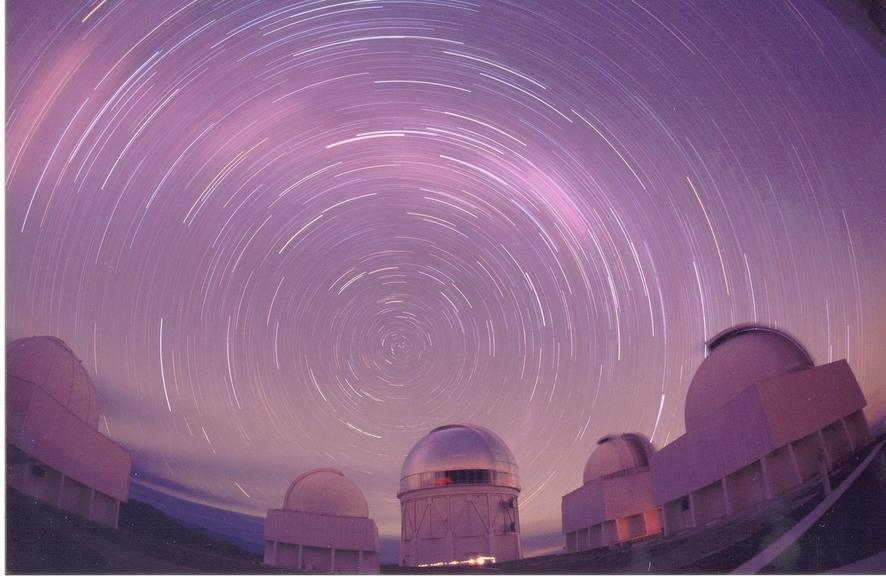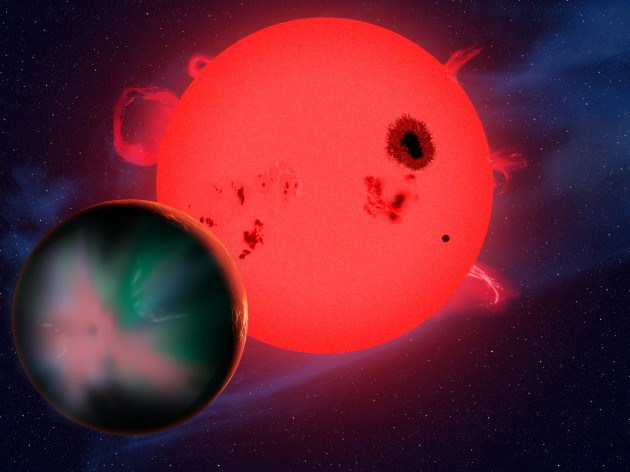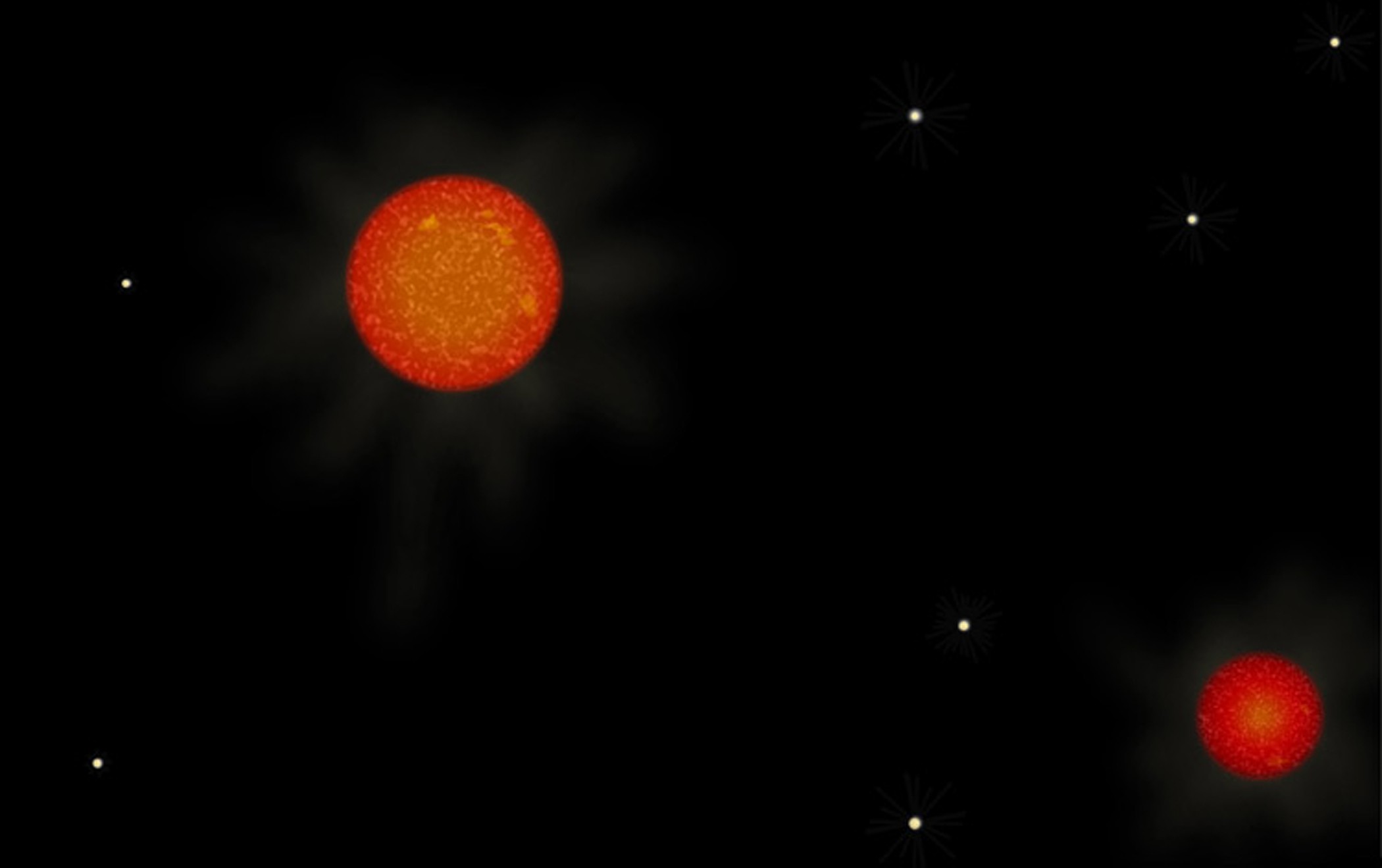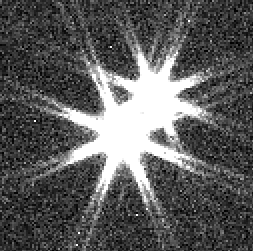 Home
Home
Jen Winters, PhD
Harvard-Smithsonian Center for Astrophysics
60 Garden Str., P351
Cambridge, MA 02138
Office: 617.496.7952
email: jennifer (dot) winters (at) cfa (dot) harvard (dot) edu
The background image is a long integration of the South Celestial Pole taken by Matthias Dietrich from CTIO.
 Me
Me
Who I Am
I am a Postdoctoral Research Associate at the
Harvard-Smithsonian Center for
Astrophysics working with
David Charbonneau and the MEarth
group. I completed my PhD under the guidance of Todd Henry at Georgia State University where part of
my thesis project was determining the stellar multiplicity of nearby M dwarfs
(see my dissertation and REDDOT below).
The background image is the view of the Chilean Andes taken from the Cerro Tololo Inter-American Observatory
by JGW.
 Science!
Science!
The Science That I Do
My primary research interest is characterizing the nearby population of M dwarfs,
with a focus on their multiplicity (how many are found in systems of
one, two, three, and more stars). By precisely measuring stars' positions (astrometry),
astronomers can determine their trigonometric distances, while photometric techniques enable the
measurements of their brightnesses. Combining these two methods enable inferences to be made
about the ages, compositions, and multiplicity of these low-mass stars.
My post-doctoral work consists of using high resolution techniques to discover stellar companions at very small separations
from their primary M dwarfs, as well as using MEarth data to further explore the nearby red dwarf multiple population.
The background image is an artist's rendition of a hypothetical planet orbiting an M dwarf.
Image Credit: David A. Aguilar, CfA.
 REDDOT
REDDOT
REDDOT
REDDOT is a
project to definitively determine the stellar multiplicity of nearby M Dwarfs. We
define M Dwarfs as those stars with masses 0.64 - 0.075 times
the mass of our Sun. My thesis project consisted of probing the
environs of 1120 of these stars using two different search
methodologies: 1) I-band imaging for companions at 1-5 arcsecond
separations, and 2) a blinking search using SuperCOSMOS plates in
conjunction with the I-band images noted above for common proper
motion companions at separations 4 - 300 arcseconds. Our all-sky
sample consisted of 1120 M Dwarfs having an accurate published
parallax (as of January 1, 2014) that places them within 25 parsecs
(81.5 light years) of the Sun.
The background image is an artist's rendition of the M dwarf
system SCR 0630-7643AB, a RECONS discovery. Image Credit: Zina
Deretsky, National Science Foundation.
 MEarth
MEarth
The MEarth Project (pronounced 'mirth')
is an all-sky astronomical survey that is using robotic telescopes in
both the northern and southern hemispheres to observe nearby
(distances < 33 pc) M dwarf stars in search of new Earth-like
exoplanets. MEarth has discovered three planets around these nearby
low-mass stars to-date. Data from MEarth have enabled the measurements
of trigonometric distances to ~1500 northern M dwarfs, the calculations
of masses and radii of newly-revealed eclipsing binaries, and the
determination of rotation periods for ~400 nearby M dwarfs, while
complementary science from this project has resulted in the
assessment of metallicities for ~450 of these low-mass
neighbors.
Image credit: MEarth
 RECONS
RECONS
RECONS
formed in 1994 with the intent of understanding the nature of the
Sun's nearest stellar neighbors, both individually and as a
population. Our goals are to discover ``missing'' members of the
sample of stars within 25 parsecs (81.5 light years) and to
characterize all stars within that distance limit. New members are
found via astrometric, photometric, and spectroscopic techniques, or
through companionship studies at small and large separations.
Characterization includes photometry and spectroscopy at both optical
and infrared wavelengths, as well as determinations of the luminosity
function, mass function, and multiplicity fraction of the nearby
stars.
The background image is of the star system nearest to the Sun,
Alpha Centauri AB. Image credit: RECONS.
 Resources
Speckle Observing Schedule
Resources
Speckle Observing Schedule
 Publications
Publications
First Author Publications
Winters et al. 2021:
The Volume-Complete Sample of M Dwarfs with Masses 0.1-0.3 M_sol Within 15 Parsecs
Table 3
Table 4
corrections/updates
Winters et al. 2020:
Spectroscopic Orbits of Eleven Nearby, Mid-to-Late M Dwarf Multiple Systems
Winters et al. 2019b:
Three Red Suns in the Sky: A Transiting, Terrestrial Planet in a Triple M Dwarf System at 6.9 Parsecs
Winters et al. 2019a:
TSN 45: The Stellar Multiplicity of M Dwarfs Within 25 pc
Paper Tables 3,4,11 (combined)
Winters et al. 2018:
LHS 1610A: A Nearby Mid-M Dwarf With A Companion That Is Likely
A Brown Dwarf
Winters et al. 2017:
TSN 38: Results From the CTIO 0.9m: Trigonometric Parallaxes to 151
Nearby M Dwarf Systems
PhD Dissertation (2015):
Nearby Red Dwarfs & Their Dance Partners: Characterizing
More Than 2000 Single & Multiple M Dwarfs Near The Sun
Winters et al. 2015:
TSN 35: Distances to 1404 M Dwarf Systems Within 25 pc in the Southern Sky
Winters et al. 2011:
TSN 23: CCD Photometric Distance Estimates of SCR Targets -- 77 M Dwarf Systems
Within 25 Parsecs
The background image is of sunset in the Chilean Andes taken from the Cerro Tololo Inter-American
Observatory by JGW.
 Home
Home

 Me
Me  Science!
Science!  REDDOT
REDDOT  MEarth
MEarth  RECONS
RECONS  Resources
Resources  Publications
Publications